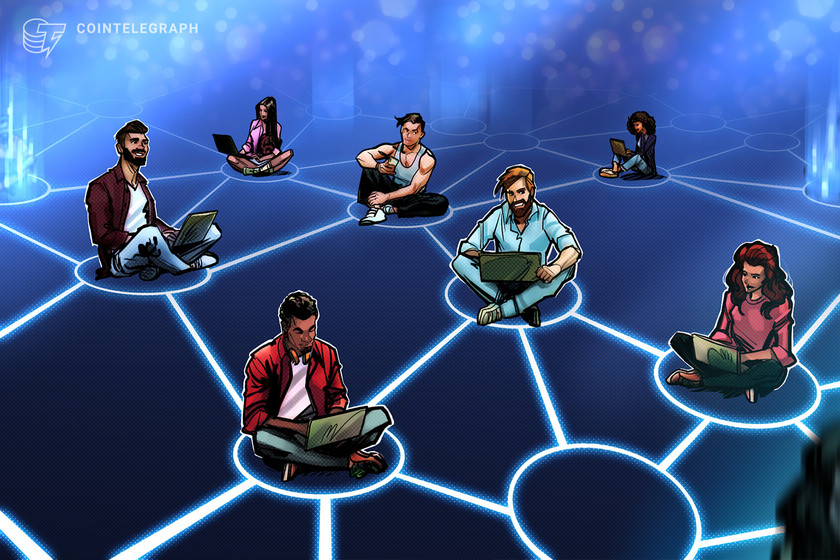
The gaming ecosystem is set to become more community-driven with the help of decentralized tech, empowering creators and coders.
People have talked in glowing tones about the transformative properties of blockchain since Satoshi Nakamoto launched Bitcoin (BTC) back in 2009 — books have been written, thousands of panels and presentations have complemented its prospects, costumed Bitcoin maximalists have flaunted their newfound wealth. Despite these commendations, the transformation has been slow.

However, whether the delay was due to the global COVID-19 pandemic, or just the time needed to create innovation, we are now on the cusp of change that is creating new economies and ways of human interaction. The Metaverse, with the powerful combination of game theory and blockchain, is creating tokenized incentivisation in virtual worlds. Decentraland has already started to revolutionize people’s lives and interaction, and many similar platforms are being built. The Metaverse will grow to include multiple cross-chain possibilities as the virtual economy grows in importance.

NFTs and the gaming industry
GameFi, a term used to describe the burgeoning intersection between decentralized tech and the video game industry, is where the real value is being created. Nonfungible tokens (NFTs) allow players to own assets with tangible, real-world value and incentivise gamers to participate for longer periods of time, as well as allowing developers to create in-game economies which are based on the creativity and interactions of players as creators and owners.
Related: The Metaverse, play-to-earn and the new economic model of gaming
Blockchain offers numerous advantages to GameFi:
- Transparency: Making the gamification mechanisms clear, transparent and perhaps codified through a smart contract, users tend to trust more and therefore to invest more resources in terms of money and time.
- Interoperability: The blockchain allows for the possibility of creating portability of virtual resources outside the limits imposed so far.
- Liquidity: It is now possible to buy, sell and exchange assets outside of individual games.
- Autonomous automation with smart contracts, which may enable multiple parties to interact with each other, even without human intervention.
NFTs can increase player engagement and create better gameplay experiences which, ultimately, increases the value of in-game NFTs and tokens. Players can now have agency within the games they want to play, and as to how these games evolve.

Axie Infinity came to prominence, in part, because of its social impact in keeping families out of poverty during the pandemic, and its player-created “scholar” program, which encourages community development, is growing fast. It's now a multi-billion-dollar, player-controlled game ecosystem.
BlackPool is another example of an early decentralized autonomous organisation (DAO) built for NFT gaming and trading. This platform is very much community-driven; it combines a passion for gaming and art with data analytics and machine learning to provide returns for users. BlackPool has also deployed Axie-like scholarship programs, opening up new income streams for the excluded. Blockchain enables participation, voting rights and monetization within an economy. It is also possible through interoperability to foresee the creation of networks of online communities, with exchanges and interactions among them.
Community first
The big story here is that we are seeing a move from “corporation first” to “community first.” The community forms around an idea or interest through engagement and collaboration with the community, and concepts emerge out of the community. It’s “community first” and “community fast!”
These communities are decentralized and community-governed — designs can be put to vote, and the artwork with the highest number of votes from the community can ultimately get accepted for the final design. Every time someone mints an NFT, the artists who worked on the asset earn royalties from it for each transaction. This will open up unexplored terrains of monetizing creative knowledge and skills.
Related: DeFi’s quest to reimagine finance must come from a community-based design
The create-to-earn model allows creators to take complete control of the game studios and directly participate in developing the game. This provides the community the opportunity to make in-game assets, create NFTs and sell them on secondary marketplaces. This is a powerful new creator economy that is emerging, in which players and coders can liberate their ideas, improve the in-game experience and monetize their intellectual capital. This makes the gaming ecosystem more community-driven, with content creators getting incentivized to enhance the overall playing experience. Anyone with basic coding skills can contribute to the game.
This will also drive new social networks to emerge between creators and fans. The attention economy will be replaced through social tokens in the Metaverse to bring a new immersive fan-run economy. Social tokens based around a brand, community or influencer will allow communities or celebrities to further monetize themselves. They will create bi-directional relationships between creators and consumers, with benefits on both sides. These Web 3.0 communities are collaborating, evangelizing and creating tribal network effects, all helping each other drive the value of their platform.
Digital communities are forming networks through token economies. The more players use or promote the community, the stronger the game and underlying blockchain become. The players are the stakeholders.
Related: DAOs will be the future of online communities in five years
This creates the data infrastructure to enable a harmonized, interconnected Metaverse that further enables tokenized NFTs to include digital data rights, and to store, track and enforce those data rights. We are still in the early days of this transformation, and the future is in the hands of innovators and creators, and the community who support them. These communities are the new tribes of the Metaverse, and the only limit to what is possible is your imagination!
This article does not contain investment advice or recommendations. Every investment and trading move involves risk, and readers should conduct their own research when making a decision.
The views, thoughts and opinions expressed here are the author’s alone and do not necessarily reflect or represent the views and opinions of Cointelegraph.
via cointelgraph.com


